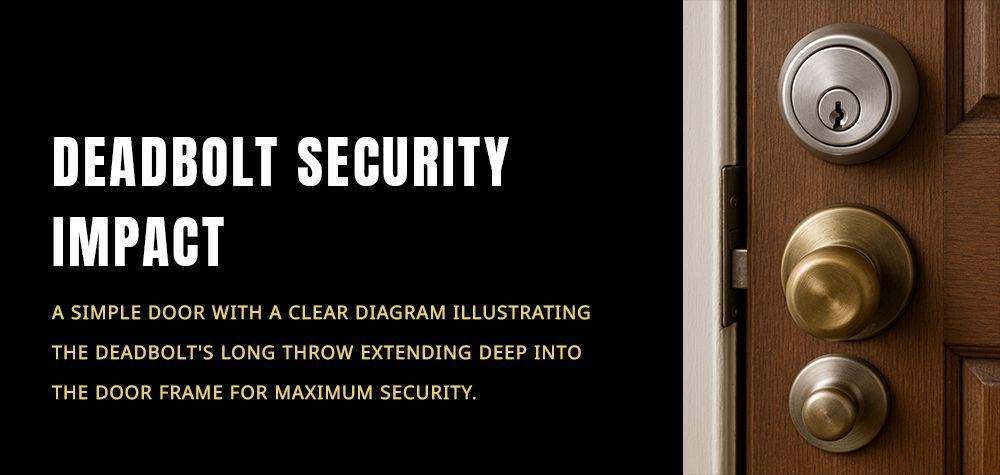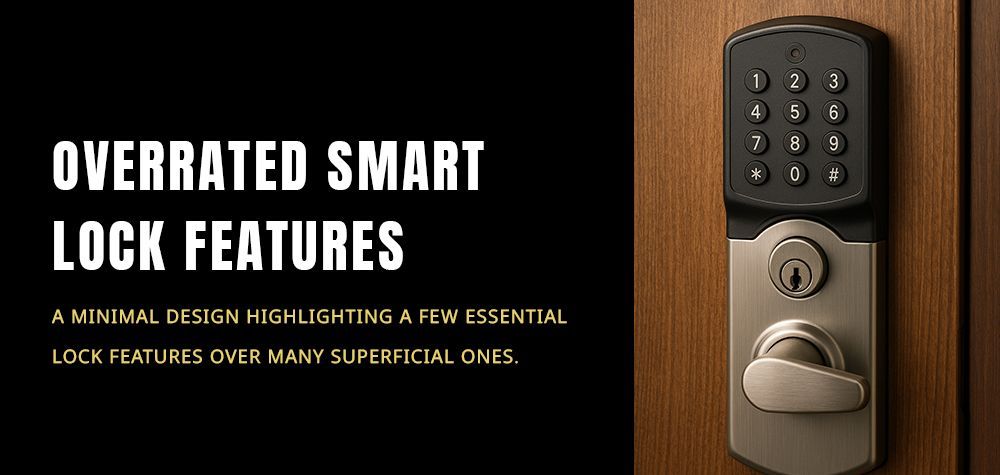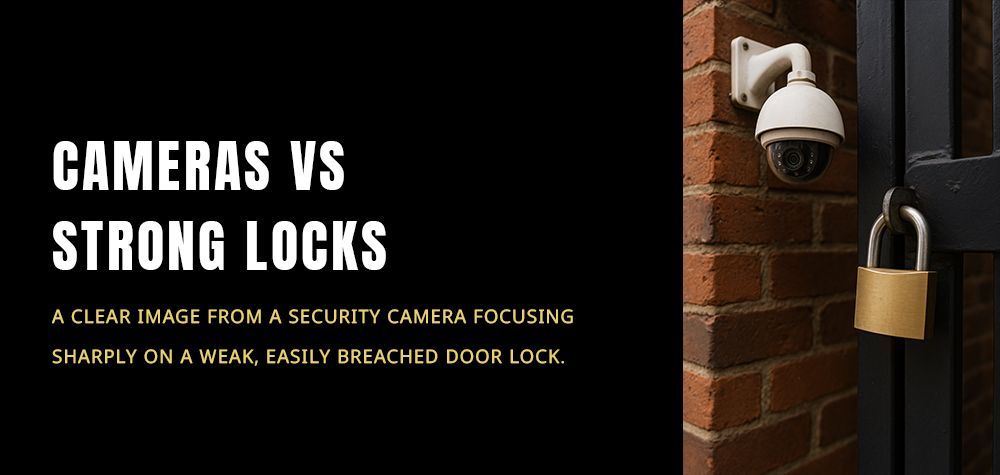Why Cybersecurity Is Critical to Your Physical Security Strategy
In today's interconnected world, cybersecurity and physical security are no longer separate entities. The rise of smart locks, connected surveillance systems, and digital access control has made it clear that a breach in cybersecurity can directly impact physical security. From corporate offices to residential homes, the integration of digital technology in physical security measures has created new challenges and risks. Understanding the relationship between these two domains is crucial for ensuring comprehensive protection in an era where threats are evolving rapidly.
The Future of Lock Technology: AI-Powered Security Systems
The Growing Convergence of Cybersecurity and Physical Security
Traditionally, physical security revolved around locks, alarms, and security personnel, while cybersecurity dealt with protecting networks, data, and digital systems. However, advancements in technology have blurred these boundaries. Modern security systems rely on the Internet of Things (IoT), cloud computing, and artificial intelligence (AI) to function efficiently. This means that a cyberattack on a networked security system could compromise physical security, allowing unauthorized access to buildings, data centers, or even entire facilities.
For instance, smart locks, which rely on digital authentication, can be hacked remotely if they lack strong encryption. Similarly, security cameras connected to the internet can be disabled or hijacked, leaving properties vulnerable to intrusions. This interdependence underscores the importance of addressing cybersecurity risks to maintain robust physical security.
How Cyber Threats Compromise Physical Security
1. Hacking Smart Locks and Access Control Systems
Many organizations and homeowners have adopted smart locks and digital access control systems for convenience and enhanced security. However, cybercriminals can exploit vulnerabilities in these systems to bypass authentication measures. Weak passwords, outdated firmware, and unsecured networks make it easier for hackers to gain unauthorized entry, putting assets and lives at risk.
2. Disrupting Surveillance and Monitoring Systems
Surveillance cameras are crucial for deterring crime and monitoring properties, but if these systems are connected to an unsecured network, they become a target for hackers. Cyberattacks can disable cameras, manipulate footage, or even provide real-time access to criminals, allowing them to plan and execute intrusions without detection.
3. Exploiting IoT Security Flaws
The rapid adoption of IoT devices in security systems has increased convenience but also introduced new risks. Many IoT devices have weak security protocols, making them easy targets for cybercriminals. Once compromised, hackers can manipulate alarms, disable security sensors, or gain access to sensitive information about a facility’s security infrastructure.
4. Ransomware Attacks on Security Systems
Cybercriminals have started targeting security systems with ransomware, locking out users from their own security networks. This means that security personnel or homeowners may be unable to access or control their surveillance systems, alarms, or access control devices unless they pay a ransom. Such attacks not only disrupt security operations but also put properties at significant risk.
Steps to Strengthen Cyber-Physical Security
1. Implement Strong Authentication Measures
Using strong, unique passwords and enabling multi-factor authentication (MFA) for all security-related digital systems can prevent unauthorized access. Biometric verification, security tokens, and encrypted authentication protocols add extra layers of protection against cyber threats.
2. Keep Firmware and Software Updated
Manufacturers regularly release security patches to address vulnerabilities. Ensuring that all security devices, including smart locks, surveillance cameras, and access control systems, have the latest updates minimizes the risk of cyber exploitation.
3. Secure Network Connections
Many cyberattacks occur due to weak or unsecured networks. Using firewalls, VPNs, and encrypted Wi-Fi connections can protect security systems from unauthorized intrusions. Separating security devices from general-use networks also adds an extra layer of protection.
4. Conduct Regular Security Audits
Performing routine cybersecurity assessments on physical security systems helps identify vulnerabilities before they can be exploited. Organizations should engage cybersecurity professionals to test and improve the security of their interconnected systems.
5. Train Personnel on Cyber Hygiene
Human error remains one of the biggest security risks. Educating employees, security personnel, and homeowners on best cybersecurity practices—such as recognizing phishing attempts, avoiding insecure downloads, and managing passwords securely—reduces the chances of a cyber-physical breach.
Risks Involved in Ignoring Cyber-Physical Security
- Unauthorized Access: Weak cybersecurity can lead to unauthorized access to restricted areas or sensitive locations.
- Surveillance Hijacking: Hacked security cameras can provide criminals with real-time intelligence on security blind spots.
- Disruption of Security Operations: Ransomware attacks can lock users out of their own security systems, making them ineffective.
- Data Breaches: Cyberattacks on security networks can expose sensitive information about access credentials, facility layouts, and security protocols.
- Financial and Reputational Damage: Organizations facing cyber-physical breaches may suffer significant financial losses and reputational harm, leading to loss of trust among clients and stakeholders.
Expert Recommendations for Cyber-Physical Security
- Adopt an Integrated Security Approach: Combining cybersecurity and physical security teams ensures a cohesive defense strategy against evolving threats.
- Use AI-Powered Security Solutions: Artificial intelligence can help detect and respond to cyber threats in real-time, preventing security breaches before they escalate.
- Regularly Test Security Systems: Penetration testing and simulated attacks help identify weaknesses and reinforce security protocols.
- Invest in Secure IoT Devices: Choosing security devices with built-in encryption and strong security protocols reduces the risk of cyber vulnerabilities.
- Develop a Cybersecurity Incident Response Plan: Preparing for potential breaches with a clear action plan minimizes damage and restores security faster.
Conclusion
The intersection of cybersecurity and physical security is no longer a distant concept—it’s the reality we live in today. As technology advances, so do the threats that compromise both digital and physical safety. Protecting against these evolving risks requires a proactive approach that integrates cybersecurity best practices with traditional security measures. By staying informed, investing in secure technologies, and adopting a layered security approach, individuals and organizations can safeguard their properties and data against modern cyber-physical threats. In this interconnected world, security is only as strong as its weakest link, making it essential to prioritize both digital and physical protections for a safer future.
Call Us Any Time!






